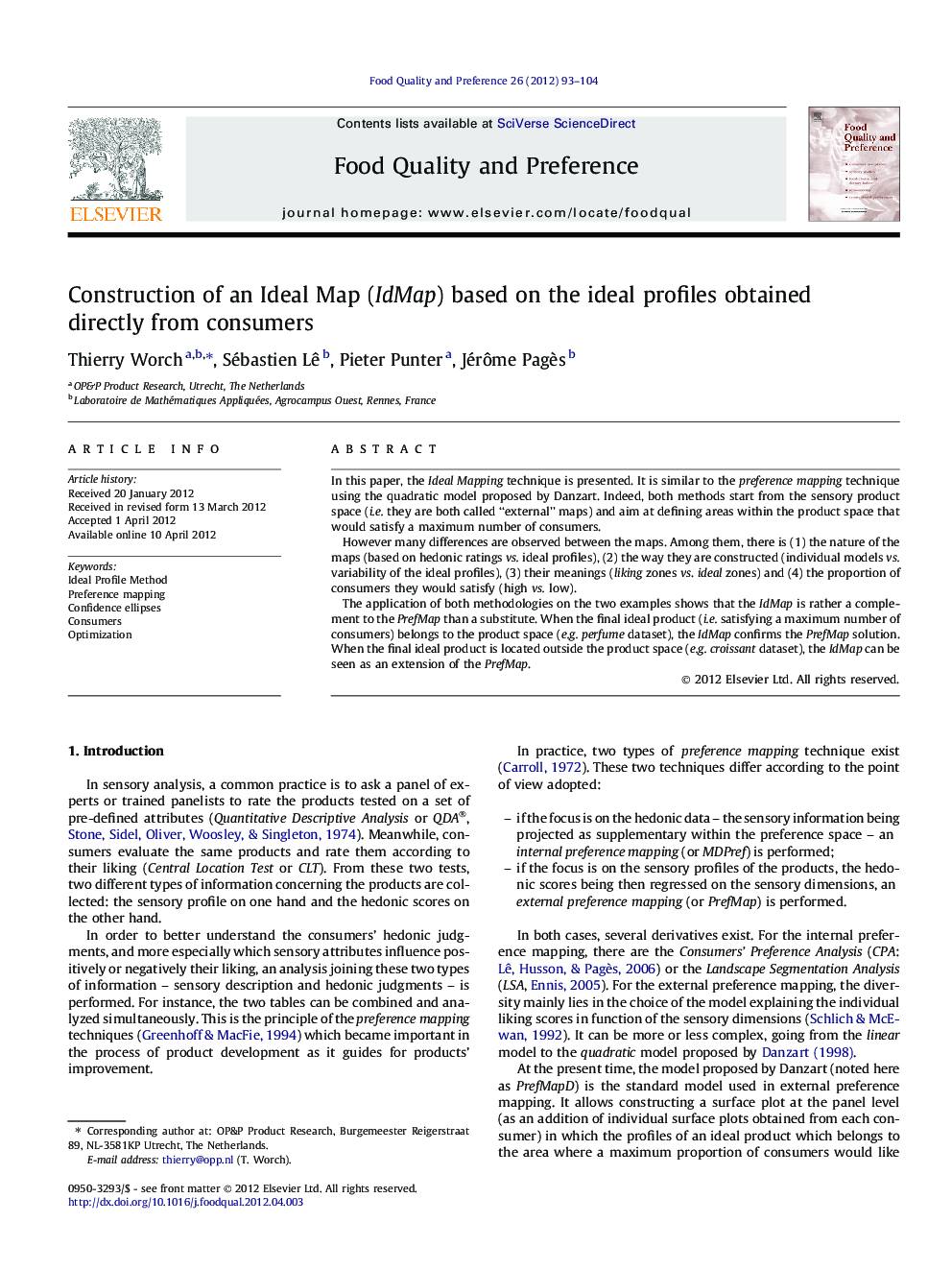| کد مقاله | کد نشریه | سال انتشار | مقاله انگلیسی | نسخه تمام متن |
|---|---|---|---|---|
| 4317506 | 1290598 | 2012 | 12 صفحه PDF | دانلود رایگان |

In this paper, the Ideal Mapping technique is presented. It is similar to the preference mapping technique using the quadratic model proposed by Danzart. Indeed, both methods start from the sensory product space (i.e. they are both called “external” maps) and aim at defining areas within the product space that would satisfy a maximum number of consumers.However many differences are observed between the maps. Among them, there is (1) the nature of the maps (based on hedonic ratings vs. ideal profiles), (2) the way they are constructed (individual models vs. variability of the ideal profiles), (3) their meanings (liking zones vs. ideal zones) and (4) the proportion of consumers they would satisfy (high vs. low).The application of both methodologies on the two examples shows that the IdMap is rather a complement to the PrefMap than a substitute. When the final ideal product (i.e. satisfying a maximum number of consumers) belongs to the product space (e.g. perfume dataset), the IdMap confirms the PrefMap solution. When the final ideal product is located outside the product space (e.g. croissant dataset), the IdMap can be seen as an extension of the PrefMap.
► The methodology of the IdMap is presented here.
► It is similar to external preference mapping, but use the consumers’ ideal profiles (provided by IPM) instead of liking ratings.
► PrefMap and IdMap have different properties, by construction.
► This map is a complement to PrefMap, more especially when the “best ideal” is situated outside the product space.
Journal: Food Quality and Preference - Volume 26, Issue 1, October 2012, Pages 93–104